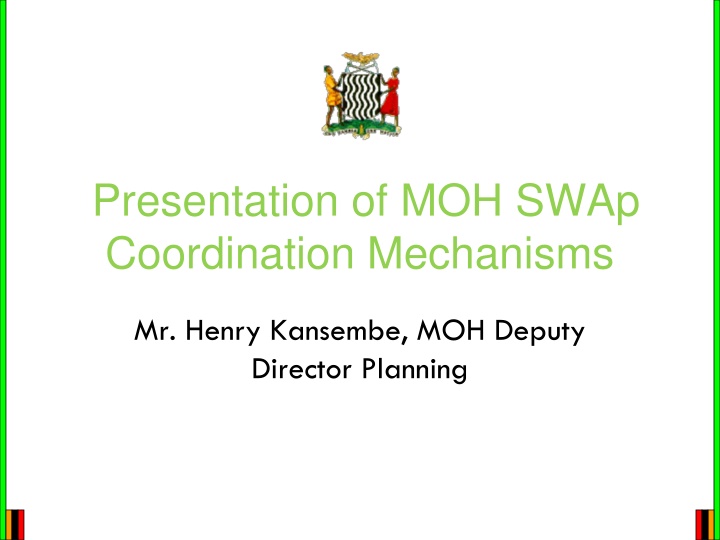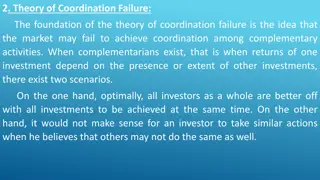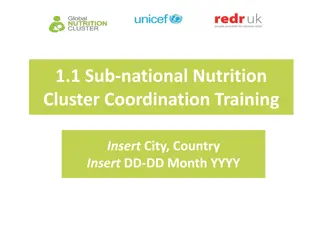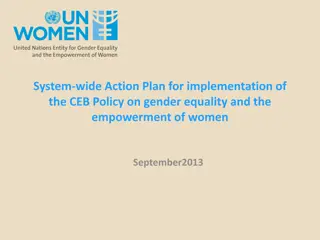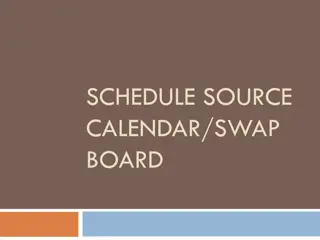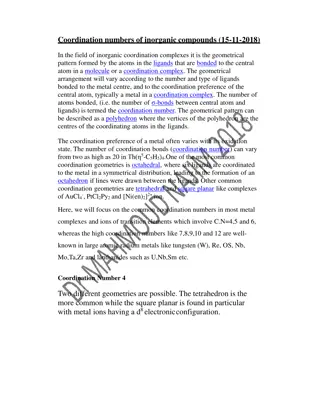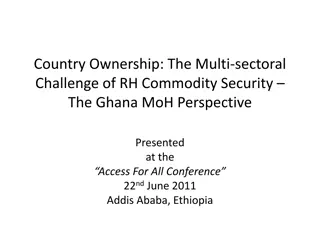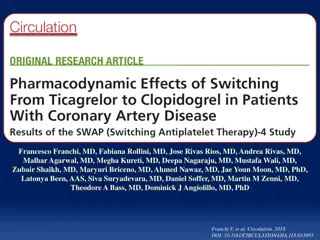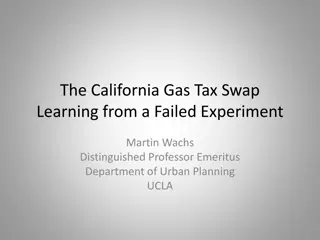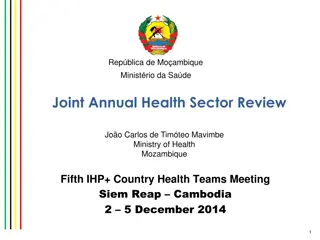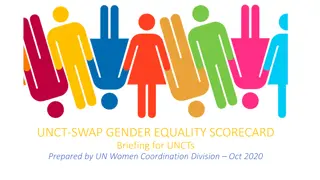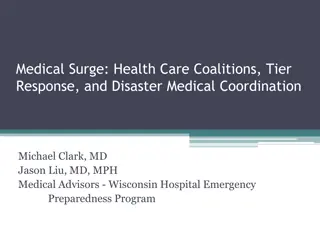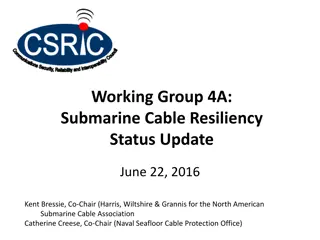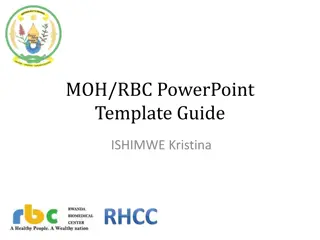Presentation of MOH SWAp Coordination Mechanisms for Effective Health Sector Collaboration
Review the existing coordination mechanisms and structures, stimulate dialogue on MOH coordination principles, discuss NHSP priorities for partner coordination, agree on actions to strengthen coordination. Explore recent background, SWAp coordination mechanisms, sector coordination meetings, and annual consultative meeting details.
Download Presentation

Please find below an Image/Link to download the presentation.
The content on the website is provided AS IS for your information and personal use only. It may not be sold, licensed, or shared on other websites without obtaining consent from the author.If you encounter any issues during the download, it is possible that the publisher has removed the file from their server.
You are allowed to download the files provided on this website for personal or commercial use, subject to the condition that they are used lawfully. All files are the property of their respective owners.
The content on the website is provided AS IS for your information and personal use only. It may not be sold, licensed, or shared on other websites without obtaining consent from the author.
E N D
Presentation Transcript
Presentation of MOH SWAp Coordination Mechanisms Mr. Henry Kansembe, MOH Deputy Director Planning
Objective of Presentation Review the existing coordination mechanism and structures To stimulate dialogue on the MOH coordination structures that underpin the principles of collaboration for effective implementation of national health priorities and strategies Discuss NHSP priorities related to strengthen partner coordination in the health sector Agree on actions to strengthen partner coordination 2
SWAp Coordination Mechanism Annual Consultative Meeting Sector Advisory Group Meeting MOH- Troika/Leadership Team meeting Policy Meeting Health CP Group Meetings TWG TWG TWG TWG TWG TWG 4
Sector Coordination Meeting There are four key sector coordination meeting namely, the annual consultative meeting, Sector advisory group meetings, policy meetings and TWG meetings The Questions to ask about each of these are: Is the timing for the meeting appropriate in relation to MOH planning? Does this meeting accomplish what it sets out to do? Why or why not? What are areas can we address make the meeting more productive 5
Annual Consultative Meeting Present achievements, challenges, the proposed AAP/ABB and confirm financial commitments Annual Consultative Meeting Ministerial representation, ambassadors and high commissioners; heads of bilateral/multilateral development agencies, UN agencies and other organizations Chaired by the Honorable Minister of Health Review annual report for the Health Sector from the year proceeding Review trends and possibility to reach results of approved performance framework Endorse action plans and budgets Review pledges from Co-operating Partners Consider amendments to NHSP based on policy changes and on experiences from reviews 6
Joint Stakeholder Meeting Discuss and review sector progress in implementation of programmes biannually to inform CPs related to their disbursements and commitments Chaired by the Permanent Secretary Review implementation progress of approved work programme for previous quarters Discuss analysis of causes and possible solutions, linked to policy meeting and technical working group outputs Review preliminary findings from Joint Annual Review Discuss GRZ and CPs funds in relation to budget for previous quarters and future quarters Discuss interventions to maintain or improve results or address issues that impede achievement of goals Sector Advisory Group Meeting MOH, line Ministries and representatives from bi-lateral/multi- lateral agencies, private sector, civil society, NGOs, FBOs 7
Policy Meetings Monthly meetings to review and take action on core programme issues identified by technical working groups, MOH- Troika/Leadership Team meeting Discuss implementation updates from technical working groups Review of action taken and progress in implementing areas of priority and concern raised at the Annual Consultative Meeting Identify areas of concern that impede implementation of health services or require policy interventions Decide on a course of action to be carried out to resolve identified problems Approve an 'annual action plan that define actions to address policy implementation Policy Meetings MoH Senior Management Team, Heads of Agencies supporting the health sector, CSOs/NGOs (FBOs, NFBOs, PHPs) and relevant Government line ministries 8
Troika Meeting Platform for GRZ, MOH and CP Leadership to coordinate efforts to develop the health sector in the country, monthly Troika Meeting PS Health and CP Leadership Team Review of endorsements and action points of the Minutes from previous Policy Meetings Updates on priority actions, processes and developments within the health sector in Zambia Coordinate interventions in the health sector Review/endorsement of agendas for the SAG and policy meetings 9
Technical Working Groups Advisory support to the MOH to monitor performance of the technical areas against targets included in sector strategies, policies and the GOZ national development plan and coordinate stakeholders, donors and Implementing Partners Monitor and manage results in implementing NHSP and annual Action Plans Propose priorities in the annual action plans and provide updates Advocate for and coordinate inputs from stakeholders Advise on development of technical guidelines Forward critical policy related issues to the Policy Meeting Technical Working Groups GRZ, MoH, and other line ministries; representation of organizations engaged in the technical area with relevant expertise 10
Technical Working Groups Planning has been working on a few tasks as ground work to focus on efforts to rejuvenate TWGs as an integral structure that advises MOH on technical areas. The Standard Operational Guide for TWGs provides a common set of procedures for all TWGs. The Template for TWG TOR is a guide to develop the technical TOR including the writing of the scope of work, establishment of sub-TWGs and the organizational structure. 11
Streamline TWGs Current / Recent TWGs Suggested Streamlined TWGs Adolescent Reproductive Health Child Health Nutrition Emergency Obstetric and Newborn Care Family Planning Safe Motherhood Indoor Residual Spraying Malaria Case Management Insecticide Resistance Management M&E of the National Malaria Control Program Malaria IEC/BCC National Health Promotion HIV/AIDS IEC/BCC Quality Improvement / Quality Assurance Operational Research Procurement, Medical Products, Vaccines, Infrastructure, Equipment and Transport Health Financing Human Resources for Health Monitoring and Evaluation Human Resources Health Care Financing Supply Chain and Procurement Surveillance and Communicable Diseases Non-Communicable Diseases RMNCAH-N Malaria Insecticide Resistance Management M&E Health Infrastructure, Medical Equipment and Transport 13
Joint Annual Review MOH and stakeholders to conduct on- the-ground review and validation of select programme areas Joint Annual Review Government, CSOs, the private Sector and Cooperating Partners Select programme areas to conduct programme area review and progress in relation to the results framework and work programme Conduct visits to PHO, DHO, health centres/posts, hospitals and training institutions depending on select programme area Discuss initiatives and challenges for the period Recommend actions for following planning exercise 14
Recommendations 1. Facilitate and work with MOH leadership to develop a formal agreement that binds partners to UHC 2030 principles for effective development coordination Review and update Terms of Reference for SWAp mechanism; adjust Policy and Troika/Leadership meetings to quarterly Streamline and reorganize TWGs; adopt standardized TWG TORs and operational approach; strengthen Directorate of Planning to proactively coordinate TWGs 2. 3. 15
